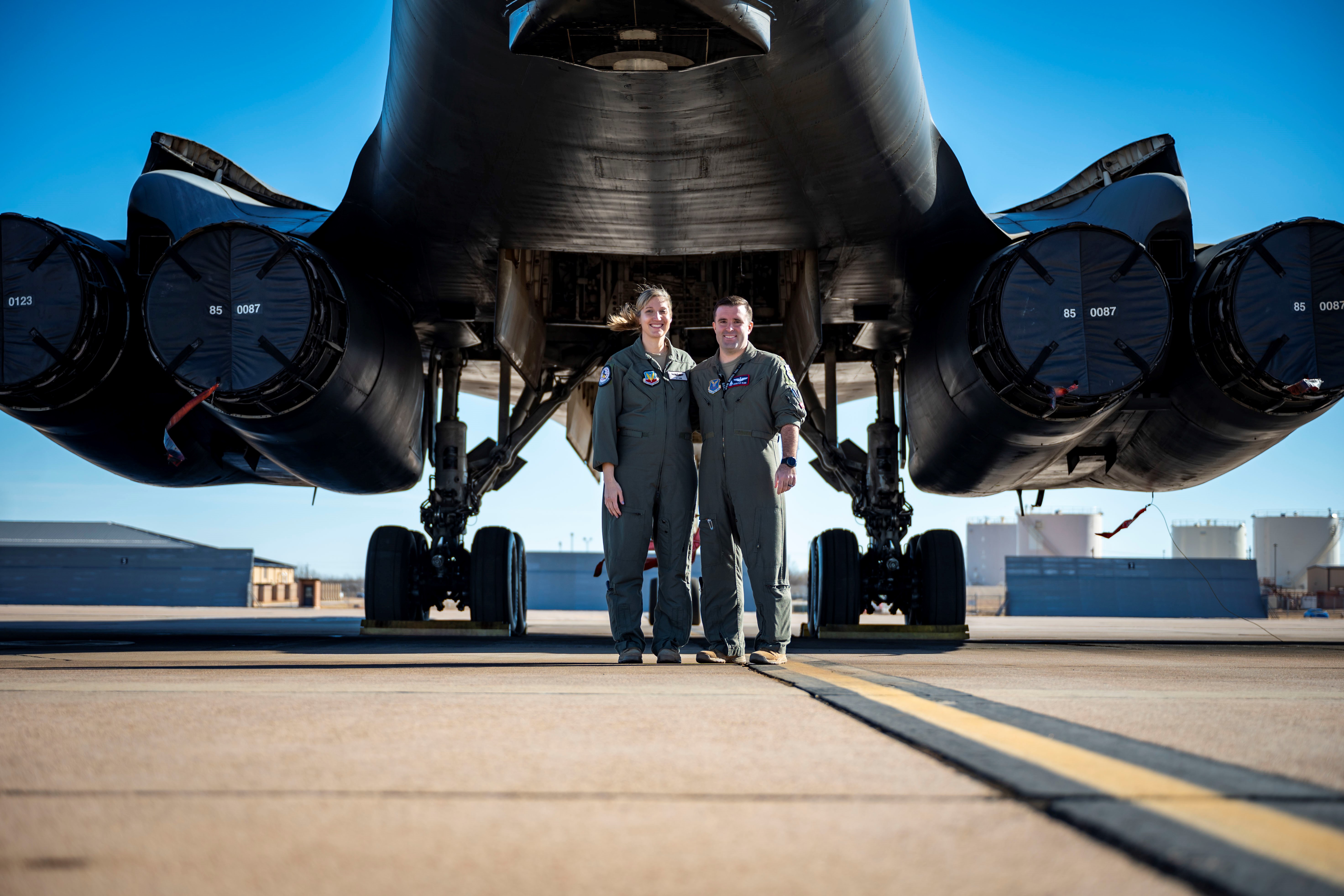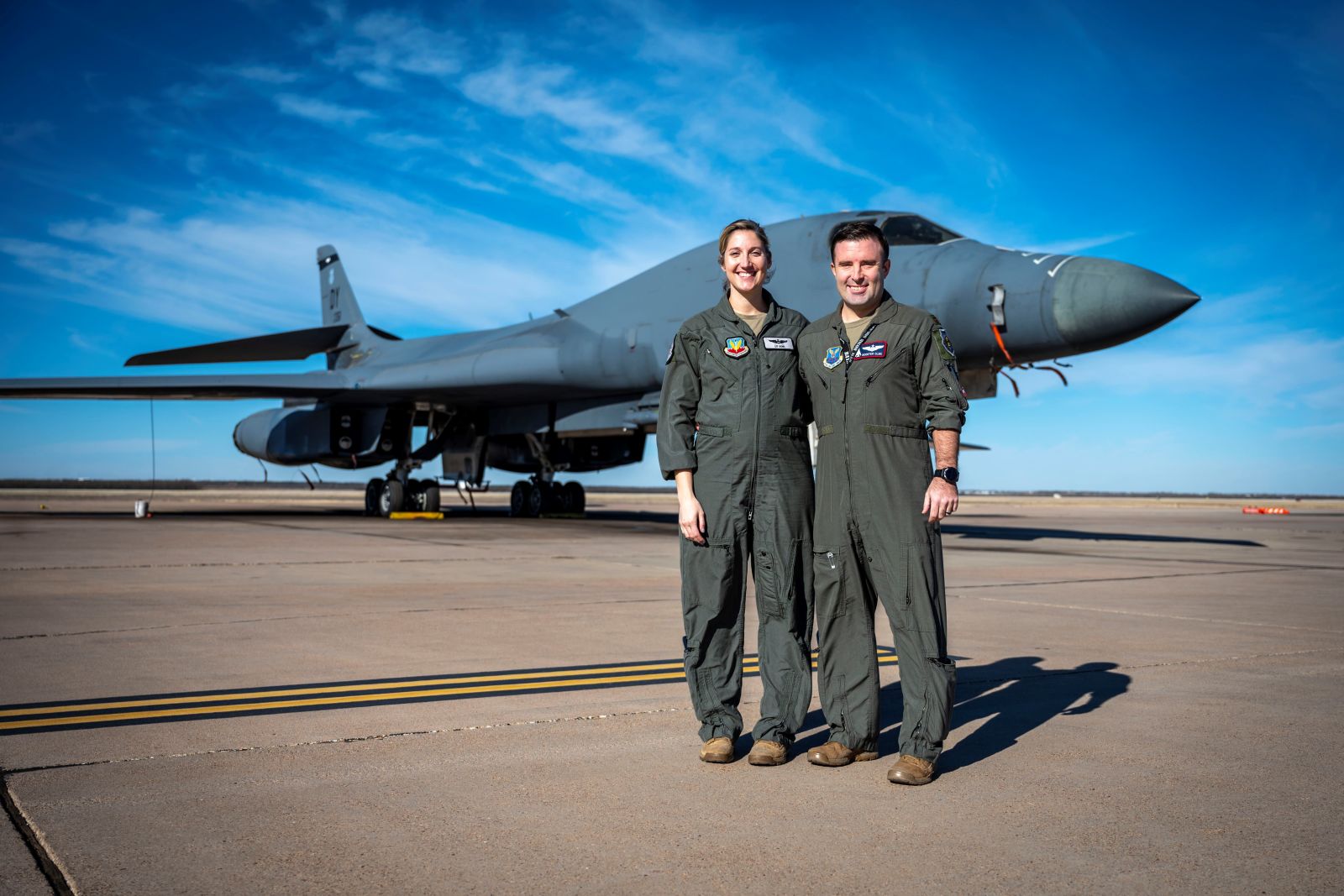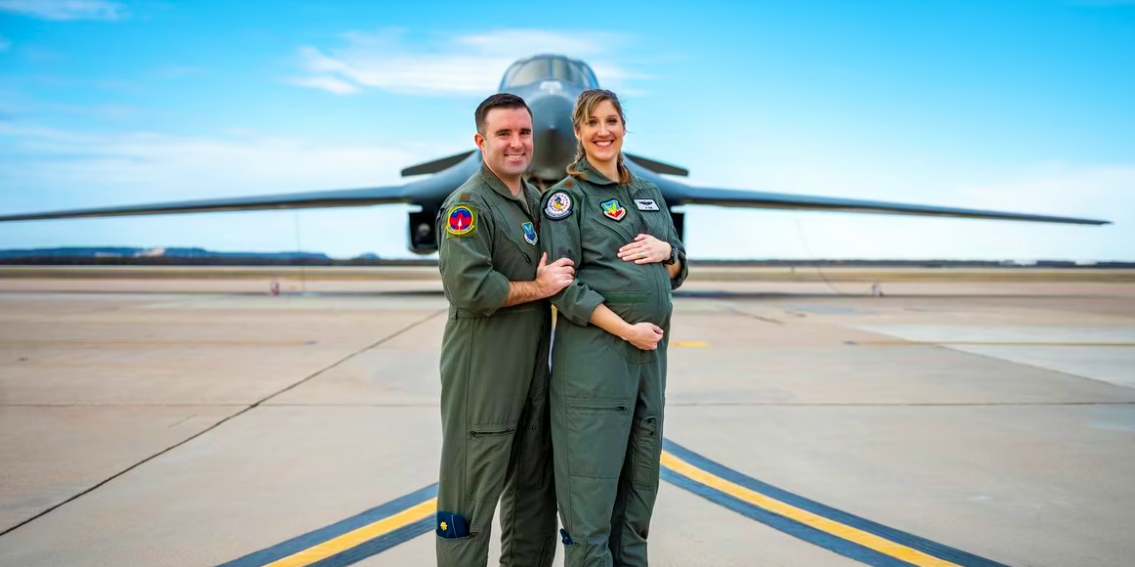


U.S. Air Force Maj. Lauren Olme is one of the first pilots to take advantage of a new policy that now allows pregnant pilots to stay in the cockpit longer. The new policy opens the door for pregnant aviators to continue logging flight hours so they don’t fall behind on their career progress due to pregnancy.
Lauren, 33, was back in the cockpit during the second trimester of her pregnancy thanks to a new Air Force policy that allows female pilots to fly , and most importantly, keep their skills sharp , during a period when they would otherwise be stuck on the ground.
Protagonist of the story — Maj. Lauren Olme, 77th Weapons Squadron assistant director of operations, when she fires up the engines of a B-1 Lancer on Dyess Air Force Base, she is living out her lifelong dream of being a pilot. In addition to that dream, she achieved a new feat that will impact future generations of servicewomen : Flying while pregnant.
Lauren garnered her passion for flying by watching her father fly as a pilot in the Air Force.
“My dad flew F-15Cs, so I instantly fell in love with flying and the Air Force culture at a pretty young age,” Lauren said. “There was never really a time that I officially decided I wanted to join the Air Force, it was just something I always wanted to do.”
Lauren met her husband, Maj. Mark Olme, 7th Operations Support Squadron bomb wing weapons officer, while attending the Air Force Academy. They became fast friends and started dating in November of 2011, eventually getting married seven months after graduation.

“We were navigating being newlyweds while both going through Undergraduate Pilot Training,” Lauren said. “Both of our flight commanders were B-1 pilots, and the bomber community combined a lot of aspects that we both wanted out of flying. We were extremely fortunate to both get assigned the B-1 out of UPT and haven’t regretted it for a second!”
After completing training at Dyess, the Olmes moved to Ellsworth AFB, South Dakota, and over the next few years journeyed to several assignments together. They deployed on a Bomber Task Force to Andersen AFB, Guam, multiple at Nellis AFB, Nevada, and a combat deployment to Al Udeid Air Base, Qatar. In 2020 they completed the Air Force’s version of “Top Gun,” the U.S. Air Force Weapons School course.
“Lauren and I have been very blessed with the opportunity to be stationed together, deploy together and go on multiple month-long exercises together,” said Mark. “The aviation world is stressful enough, then add competing with your wife, who is better than you, for everything! However, we have got to share some special moments together because of it.”
In August 2022, Lauren and Mark both found out they would be adding one more addition to their family.
“I was honestly shocked when we found out I was pregnant,” Lauren said. “We had been trying for a few months and I somewhat expected another negative test. I tested right before work and after finding out it was positive, holding that secret from Mark all day was torture but I wanted to tell him in person.”
Despite being pregnant, Lauren still longed to fly. This past year, a new Air Force policy stated aircrew members may voluntarily request to fly during pregnancy and no waiver is required to fly in the second trimester with an uncomplicated pregnancy in a non-ejection seat aircraft if all flight safety criteria are met. All pregnant aircrew members are also authorized to apply for a waiver regardless of trimester, aircraft or flight profile.
“I can’t overexpress how amazing it is that pregnant women now have the opportunity to fly in all types of aircraft,” said Lauren. “It’s a very personal decision that Mark and I made together because there are risks involved in flying the B-1 while pregnant but after conferring with Air Force and civilian medical doctors, we felt comfortable with me flying for a few weeks.”
Lt. Col. Charles Armstrong, 77th WPS commander said,
“This policy is a huge benefit to the Air Force, they have deliberately made a change that provides female aircrew members the same opportunities as male aircrew members,”
“This allows female aviators to continue building up their qualifications and flight hours to progress in their career field through pregnancy. It was based on years of analysis and research from aircrew physiologists both in the Air Force and outside agencies to make the determination that it is safe and acceptable for women to fly a longer period than they have done in the past.”

This allows the member to weigh out the pros and cons, ultimately deciding for themselves whether they want to fly or not.
“One of my biggest reservations about getting pregnant while being on a flying assignment was the time away from the cockpit, so having the opportunity to continue to fly and not take as much time out of the jet is a great thing,” said Lauren.
“The policy allows for aviators to fly up to 28 weeks, but for various reasons my medical team decided it best to stop around the 22-week point, so that is all the flying I’ll do with our baby.”
Baby Olme, who is expected to arrive in April 2023, has become one of the first babies in the Department of Defense to clock 9.2 hours in a supersonic aircraft.
“Lauren is an amazing lady, deploying a unit, developing a schedule, creating exercise scenarios, being a great pilot and leader, all while building a human,” said Mark. “I am not sure how she does it all, and with poise and grace. I am extremely proud of her and I can't wait to tell our child they got to fly supersonic in formation with mommy and daddy.”
Lauren expressed her admiration to become one of the first women to experience this new policy and shared her admiration for the aviation trailblazers before her.
“I’m honored to be one of the first to fly in an ejection seat aircraft while pregnant,” said Lauren. “I wouldn’t have been able to do it if women in the Air Force didn’t advocate for these types of policy changes, so to live out a policy change that other women worked so hard to enact is truly an honor.”
Source : DYESS AIR FORCE BASE, Texas
